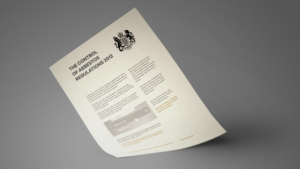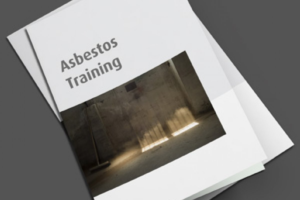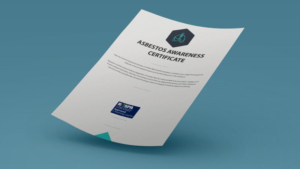Asbestos is a highly dangerous, naturally occurring substance that has been used extensively in the construction industry for the past 150 years. Unfortunately, inhalation of asbestos fibres can lead to the development of lung cancer, mesothelioma (a rare but highly dangerous cancer of the lung lining), pleural disease and asbestosis. Management of asbestos containing materials (ACMs) is governed by numerous legislations, including the Control of Asbestos Regulations 2012 which came into force on the 6th April 2012. In simple terms, the Control of Asbestos Regulations 2012 establishes whose duty it is to manage asbestos. Furthermore, it sets out the steps that this duty holder must take in managing the risks of asbestos exposure.
Who is the Duty Holder?
In order to fulfil the requirements of the Control of Asbestos Regulations 2012, the duty holder must first be identified. A duty holder can come in many shapes and sizes, including:
- The building owner
- The person in control of the building
- Those responsible for the building’s maintenance and repair
The duty holder may be stated in the tenancy or lease agreement. Duty may be shared over a number of individuals or may fall to one nominated duty holder.

How to be Compliant with the Control of Asbestos Regulations 2012
Here are eight steps that facilitate compliance with the Control of Asbestos Regulations 2012:
- Identify the duty holder.
- Decide whether asbestos is likely to be present in the building or not (if the building was built after 2000 asbestos is unlikely to be present and no further action is required).
- See whether there is an asbestos survey available, which would tell you where asbestos is within the building.
- Identify where asbestos is present through an asbestos survey. At this point it is useful to have an awareness of where asbestos is usually found within buildings and involvement of a specialist is likely to be required.
- If asbestos is identified, this must be recorded in an asbestos register. Information must include where the ACMs are, their condition and whose responsibility it is to manage them. This register should be safe but readily accessible.
- You must now decide what action should be taken and draw up an asbestos management plan. Such action may range from leaving the ACM in place with careful labelling and management to repairing or removing it entirely.
- Inform workers in the building of the presence of asbestos.
- Regularly update and review the asbestos register and the management plan.
Why are the Control of Asbestos Regulations 2012 Important?
Current estimates suggest that more than 5000 people die each year from asbestos-related diseases in the UK alone. The nature of asbestos exposure and damage means that these diseases typically occur decades after the initial asbestos exposure, when it is already far too late to intervene. This means that preventing asbestos exposure in the first place is the most effective way to combat asbestos-related diseases. In addition to this ethical duty, duty holders have a legal obligation to comply with the Control of Asbestos Regulations 2012. Breaching asbestos regulations may result in crippling fines, not to mention a massive loss of reputation. For example, Kent City Council incurred a £200,000 fine in 2018 for improper management of asbestos in a primary school. The council held their hands up and confessed failure to ensure adequate instruction, information and training to its employees. This failure to comply with asbestos legislation endangered pupils and staff alike. Although asbestos management can be complicated, asbestos training courses can help to achieve the required knowledge and skills. Not only does this facilitate compliance with the law, but it also serves to protect those working with ACMs from the avoidable health risks of asbestos exposure.

 Construction Phase Health and Safety Plan & Health and Safety File
Construction Phase Health and Safety Plan & Health and Safety File

